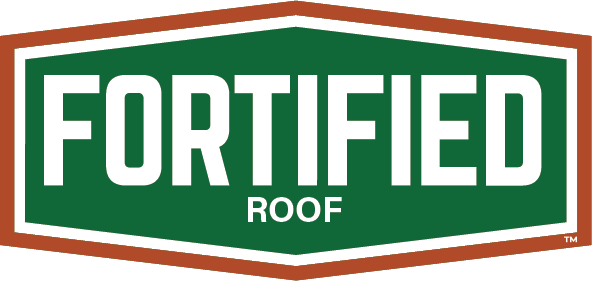Phone: 985-898-3468
New Paragraph
New Paragraph
Trusted Local Roofers with Over 30 Years of Experience
Superior Roofing Services in Mandeville, LA, Since 2005
Here in Southeast Louisiana, our roofs have to be able to handle a lot of punishment, from intense summer heat to hurricane-strength storm winds. With all that weather to contend against, you need a team to build a roof that can take everything mother nature has to throw at it and more; you need Magnolia Roofing. Located in Mandeville, LA, we have been providing expertly built roofs for our commercial and residential neighbors since 2005, one month before Hurricane Katrina landed. So, if you’re ready to work with a roofing team experienced in roof-destroying weather, call Magnolia Roofing at 985-898-3468.
Our Roofing Services Include:
New Roof Installations
Professional & Reliable Roofing Installations
Roof Repairs
Add Years of Life to Your Existing Roof
Storm Damage
When Mother Nature Destroys Your Roof We're Here To Help
Skylights
Brighten Up Your Home With Natural Light
Commercial Roofing
Keep Your Business Free from Potentially Costly Leaks
Gallery
We’re Your Friendly Local Roofing Company
We opened our doors in 2005, a month before Hurricane Katrina hit, leaving countless families with damaged or destroyed roofs. Over the following months, we worked tirelessly to get their homes repaired so they could finally start rebuilding their lives from the safety of their homes.
We Proudly Serve:
- Mandeville, LA
- Covington, LA
- Madisonville, LA
- Folsom, LA
- Abita Springs, LA
- Slidell, LA
- Tangipahoa Parish, LA
- Washington Parish, LA
- North Shore Area
- South Shore Area
- New Orleans Metro Area
Here’s What Our Customers Have to Say About Us

★★★★★
Magnolia Roofing did a great job on our new roof. Brandon was very professional and kept us up to date on the whole process. He even provided drone pictures from the shingles being removed to the finished product. The crew also did a great job cleaning up once they were done putting the new roof on. Our roof looks great!
Howard W.
Button
★★★★★
My patio roof developed a leak and to say the least I was very surprised by the company who installed the patio. They were rude, unprofessional, and with no concern of identifying much less addressing the issue…a leaking roof.
THANKFULLY, I came across Magnolia Roofing and the experience was impressive. Dave and Duncan were very helpful in detailing various roof coating options including application process and overall time allotment for the project. They were punctual and concerned with not only identifying/resolving the leak but taking care of the whole roof. I am very pleased with the professionalism, reliability, and overall quality of work. Highly Recommend Magnolia Roofing.
Liz M.
Button
★★★★★
They were one of the few roofing contractors that would do a roof repair after Hurricane Ida (everyone else either no showed or didn’t call back when I said I did not want a full roof replacement). They were on time and completed the repair at a very reasonable price.
Carolyn G.
Button
★★★★★
I could not have asked for a better company!! Very professional and my roof looks absolutely amazing!! Big thank you to Stan Nichols!!
Shawn K.
Button
★★★★★
I can’t say enough nice things about my experience with Magnolia roofing and the people that work there. After trying to call multiple different roofing companies and not getting any callbacks, Magnolia roofing ALWAYS answers the phone. They are super prompt, and were here the same day to give me a quote. They Were even willing to do repairs on the weekend. After just a few phone conversations, I decided to not even try and get another quote from another roofing company. Their prices were great, and my new roof looks amazing!
Karen P.
Button
★★★★★
Great reroof experience and great price. There are many overpriced contractors out there. I got a 150 mph wind rated roof at a fair price. Sealed all new pipe jacks and chimney really well with Ice and water barrier.
Found damage and repaired. Love the roof. Thanks Dave @ Magnolia Roofing. If u can’t reach Dave call the office. They can always help u.
Always had a boss on site.
Casey U.
Button
★★★★★
Home inspector recommended a professional roof inspection and Magnolia was recommended to us by a Realtor. They were great and gave us an estimate for what needed to be done.
Elizabeht L.
Button
★★★★★
Honest, fast, dependable and reliable.
Chris P.
Button

★★★★★
Magnolia Roofing did a great job on our new roof. Brandon was very professional and kept us up to date on the whole process. He even provided drone pictures from the shingles being removed to the finished product. The crew also did a great job cleaning up once they were done putting the new roof on. Our roof looks great!
Howard W.
Button
★★★★★
My patio roof developed a leak and to say the least I was very surprised by the company who installed the patio. They were rude, unprofessional, and with no concern of identifying much less addressing the issue…a leaking roof.
THANKFULLY, I came across Magnolia Roofing and the experience was impressive. Dave and Duncan were very helpful in detailing various roof coating options including application process and overall time allotment for the project. They were punctual and concerned with not only identifying/resolving the leak but taking care of the whole roof. I am very pleased with the professionalism, reliability, and overall quality of work. Highly Recommend Magnolia Roofing.
Liz M.
Button
★★★★★
They were one of the few roofing contractors that would do a roof repair after Hurricane Ida (everyone else either no showed or didn’t call back when I said I did not want a full roof replacement). They were on time and completed the repair at a very reasonable price.
Carolyn G.
Button
★★★★★
I could not have asked for a better company!! Very professional and my roof looks absolutely amazing!! Big thank you to Stan Nichols!!
Shawn K.
Button
★★★★★
I can’t say enough nice things about my experience with Magnolia roofing and the people that work there. After trying to call multiple different roofing companies and not getting any callbacks, Magnolia roofing ALWAYS answers the phone. They are super prompt, and were here the same day to give me a quote. They Were even willing to do repairs on the weekend. After just a few phone conversations, I decided to not even try and get another quote from another roofing company. Their prices were great, and my new roof looks amazing!
Karen P.
Button
★★★★★
Great reroof experience and great price. There are many overpriced contractors out there. I got a 150 mph wind rated roof at a fair price. Sealed all new pipe jacks and chimney really well with Ice and water barrier.
Found damage and repaired. Love the roof. Thanks Dave @ Magnolia Roofing. If u can’t reach Dave call the office. They can always help u.
Always had a boss on site.
Casey U.
Button
★★★★★
Home inspector recommended a professional roof inspection and Magnolia was recommended to us by a Realtor. They were great and gave us an estimate for what needed to be done.
Elizabeht L.
Button
★★★★★
Honest, fast, dependable and reliable.
Chris P.
Button
★★★★★
Fantastic job! From the first visit by Stan thru the entire process of roofing and replacing gutters, we can not say enough good about Magnolia’s team. They were very professional and courteous and cleaned up entirely. Rene’ the gutter installer was fabulous he did a great job. Stan was great and stayed in touch from start to finish. Need a roof? Call Magnolia Roofing.
Peggy and Jim B.
Button
★★★★★
Extremely professional from first visit to final inspection. The crew did a great job with clean up and were considerate of my plants, deck furniture, etc. would highly recommend them!
Sandy M.
Button
★★★★★
Great bid. Stan was here several times over the 1.5 days it took to install 48 squares of shingles on our roof. Workers were polite very careful of our yard, our many plants and the pool. Great warranty. Had real Samples of the shingles so we could see the true color. 100% satisfied.
Rebecca G.
Button
Don’t Destroy Your Lawn While Fixing Your Roof
Large construction projects can wreak havoc on your property’s lawn due to the heavy equipment needed. At Magnolia Roofing, we understand how important your property’s yard is to its overall appearance. Our team works with this in mind and takes measures to prevent as much damage as possible so that when the work on your roof is done, your property still looks fantastic.
Need more information? Call us at 985-898-3468 to speak with one of our roofing experts.
PHONE
HOURS
- Mon - Fri
- -
- Sat - Sun
- Closed
ADDRESS
1424 Girod St.
Mandeville, Louisiana 70448

















